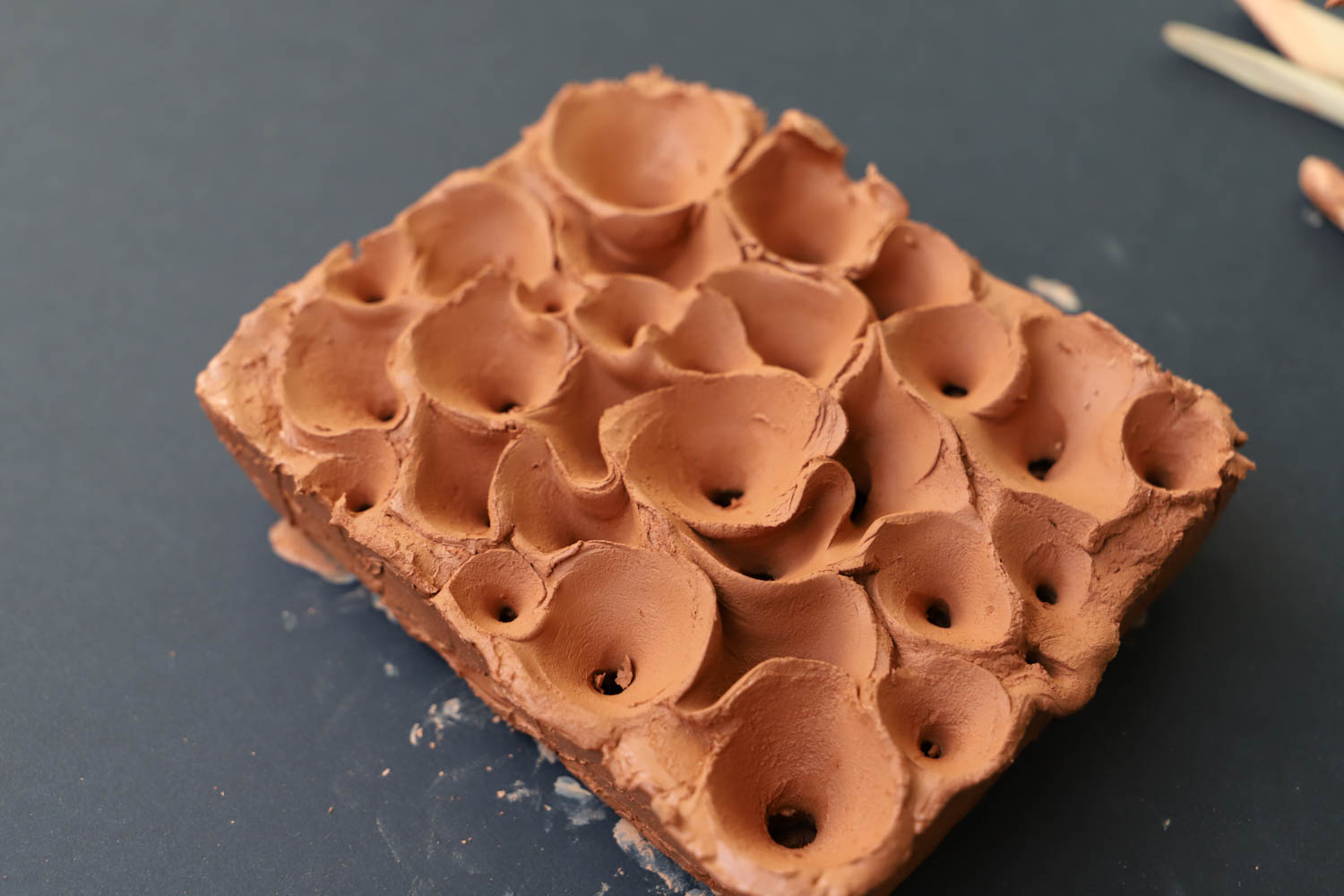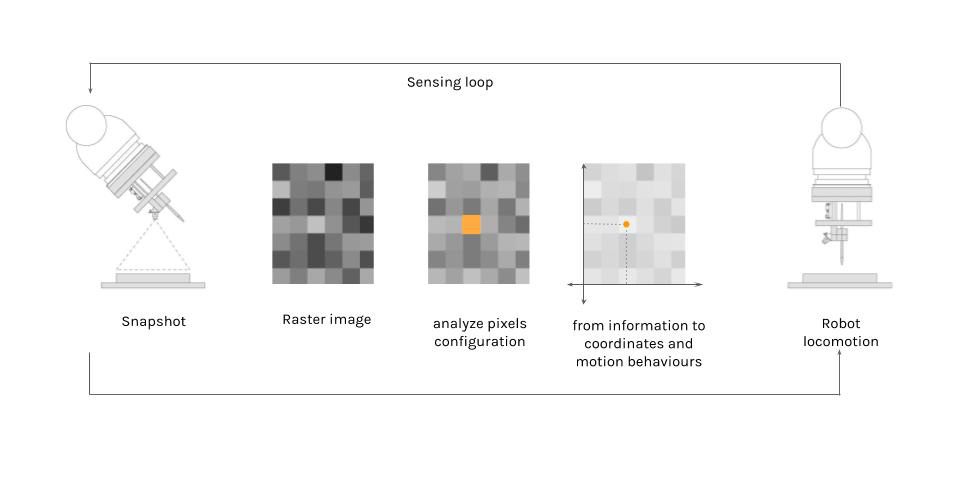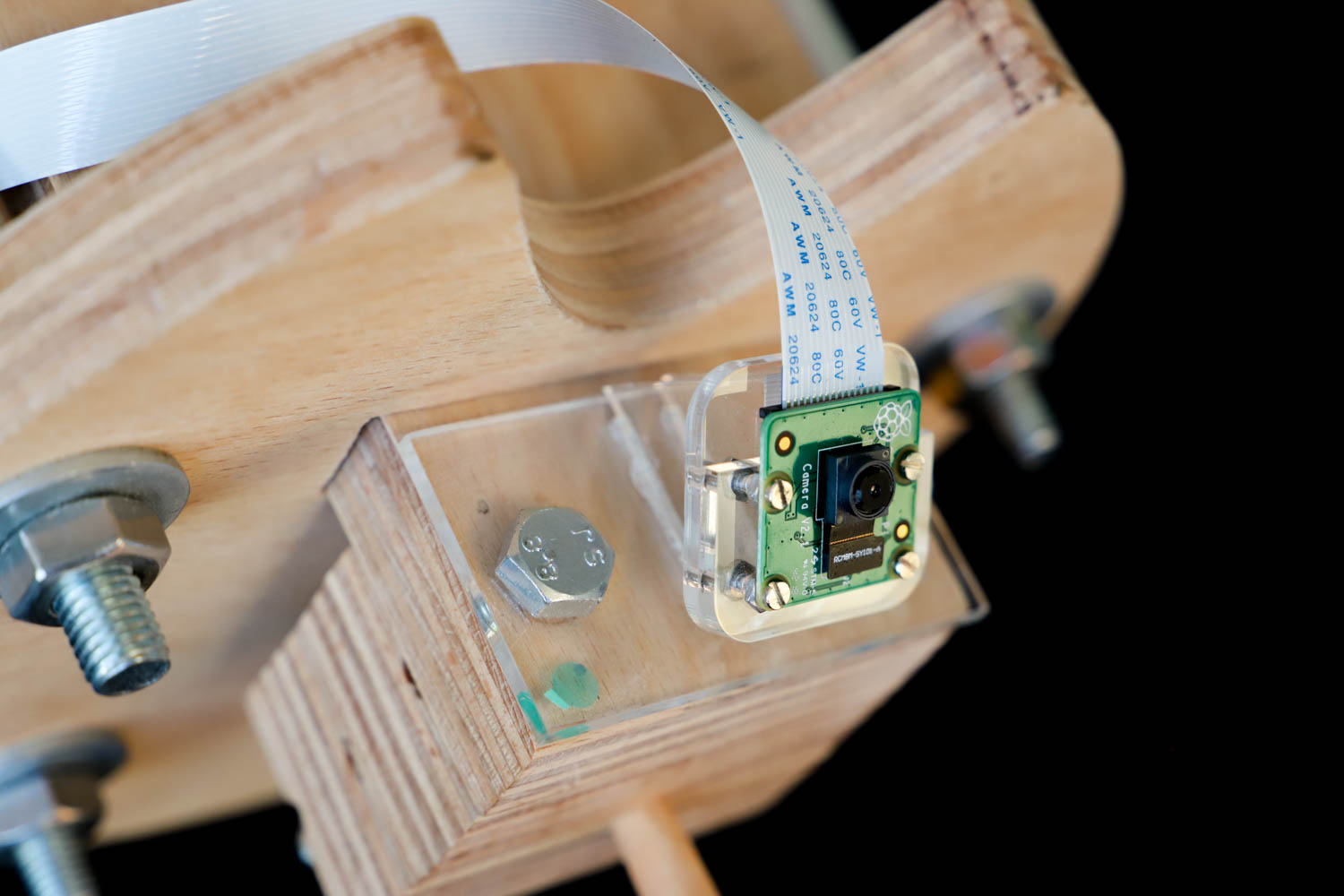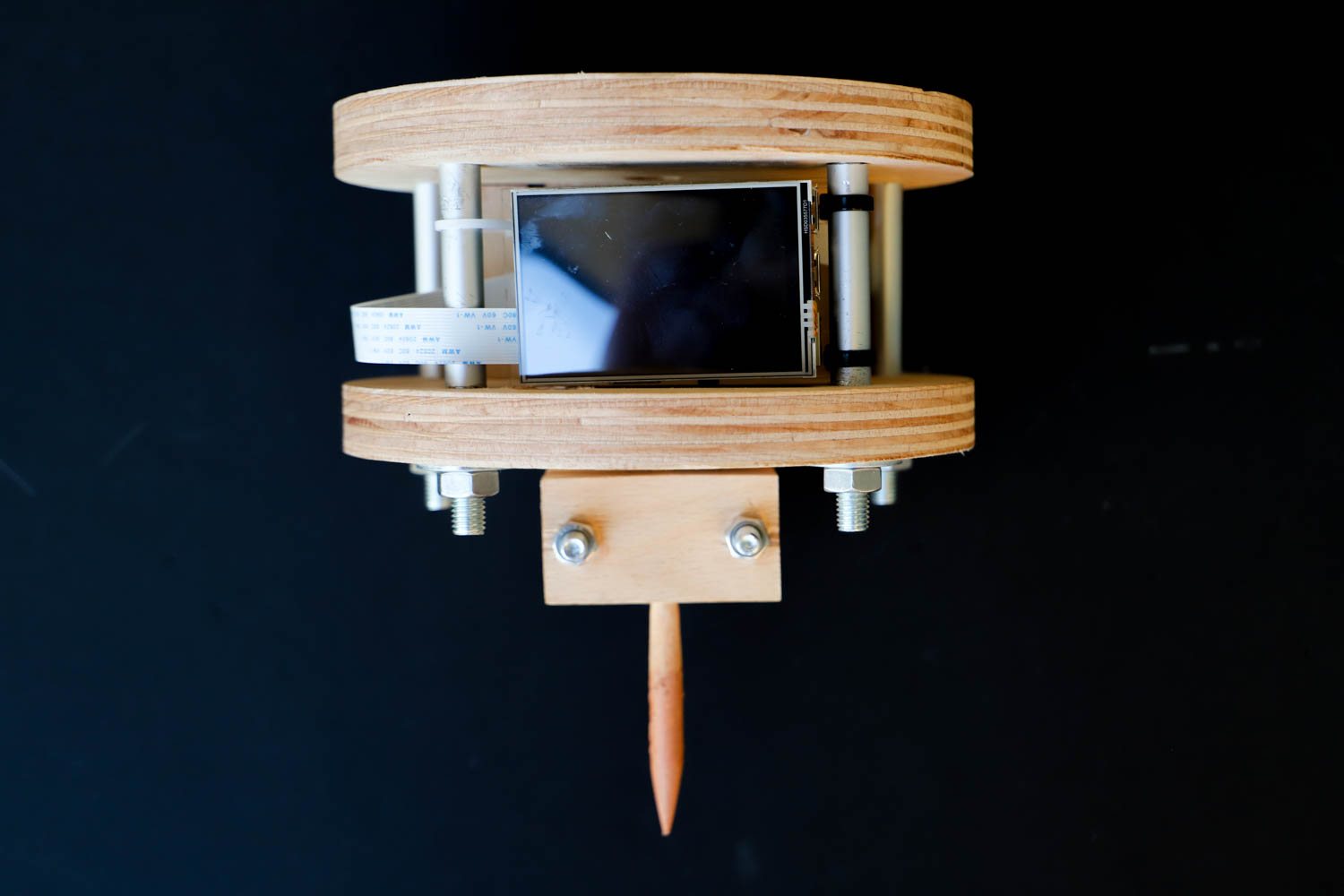
Non Deterministic Ceramic Fabrication
ITECH Master Program in the University of Stuttgart
Seminar Computational Design and Fabrication
Prof. A. Menges,
Tutors: M. Alvarez, O. Bucklin, T. Schwinn, Y. Tahouni,and M. Yablonina
Team: Francesco Milano, Karen Antorveza, Talal Ammouri
2019
This concept study for a façade- cladding system aims to explore how a traditional craftsmanship technique, such as ceramic forming, can be expanded with computational design and digital fabrication methods. The core element of the project is a robotic setup, able to shape clay in a behavioral/non-deterministic way. The manufacturing process consists of a feedback loop in which data collected through computer vision iteratively guides the robotic motion in the shaping of the tile. No predetermined toolpath movement is defined in advance, as the resultant holes-pattern on the clay is the product of the sensing loop that guides the robot's behavior under a particular set of rules. The paradigm of a new kind of creativity emerges, where the product's appearance is no longer the direct reflection of the designer's intentions but autonomously generated by the programmed self-consciousness of the tool. The resulting tiles are aesthetically coherent but all unique and unrepeatable.
ITECH Master Program in the University of Stuttgart
Seminar Computational Design and Fabrication
Prof. A. Menges,
Tutors: M. Alvarez, O. Bucklin, T. Schwinn, Y. Tahouni,and M. Yablonina
Team: Francesco Milano, Karen Antorveza, Talal Ammouri
2019
This concept study for a façade- cladding system aims to explore how a traditional craftsmanship technique, such as ceramic forming, can be expanded with computational design and digital fabrication methods. The core element of the project is a robotic setup, able to shape clay in a behavioral/non-deterministic way. The manufacturing process consists of a feedback loop in which data collected through computer vision iteratively guides the robotic motion in the shaping of the tile. No predetermined toolpath movement is defined in advance, as the resultant holes-pattern on the clay is the product of the sensing loop that guides the robot's behavior under a particular set of rules. The paradigm of a new kind of creativity emerges, where the product's appearance is no longer the direct reflection of the designer's intentions but autonomously generated by the programmed self-consciousness of the tool. The resulting tiles are aesthetically coherent but all unique and unrepeatable.






KAPHEND 2025 — Planet Earth